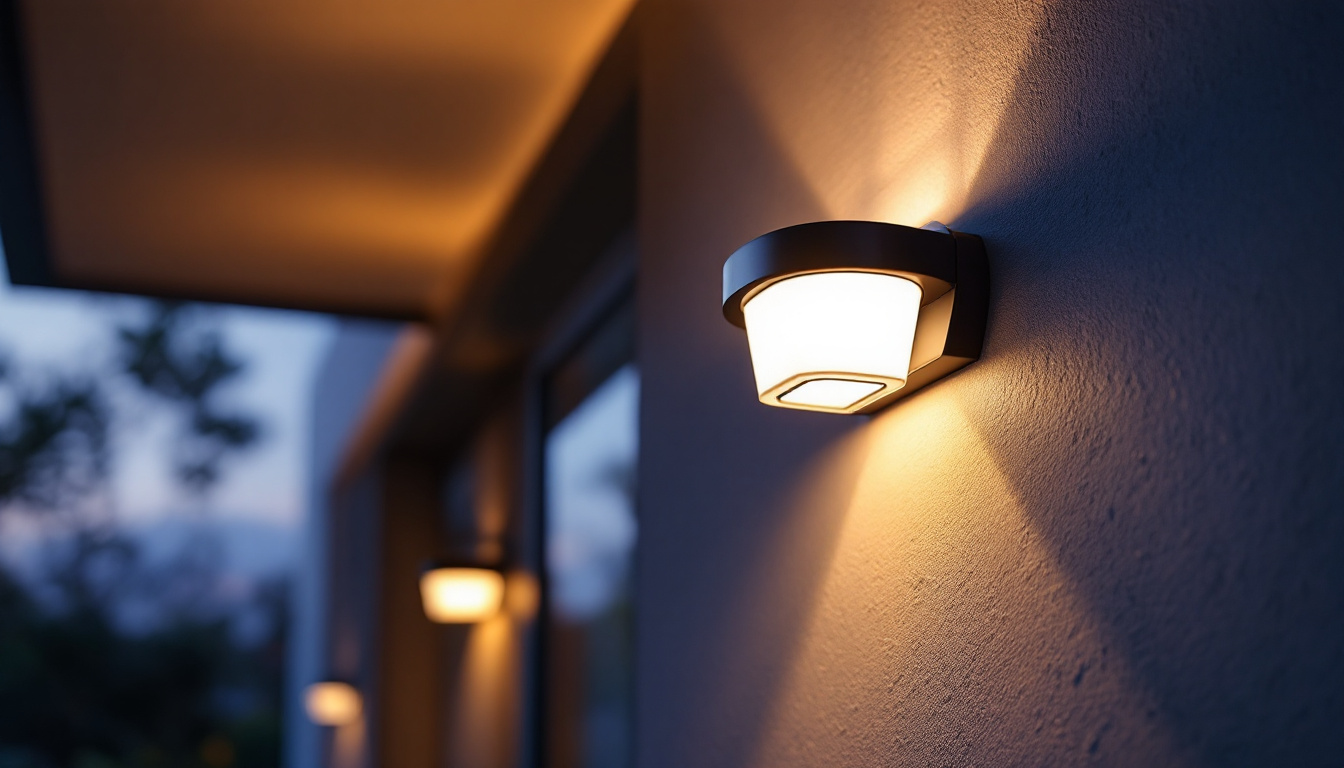
In the ever-evolving world of lighting technology, contractors face the challenge of keeping up with advancements while ensuring their projects remain relevant and efficient. One critical component that often goes overlooked is the ballast, particularly in tanning beds. Understanding the role of tanning bed ballasts and how to select the right one can significantly impact the longevity and performance of lighting projects. This article delves into the intricacies of tanning bed ballasts and provides insights on how to future-proof lighting installations.
Tanning bed ballasts are essential devices that regulate the electrical current flowing to the lamps used in tanning beds. They serve a dual purpose: providing the necessary voltage to start the lamps and maintaining a consistent current during operation. This regulation is crucial for the optimal performance of the lamps, ensuring they emit the correct spectrum of light for effective tanning.
Ballasts play a vital role in the functioning of tanning beds. Without them, the lamps would either fail to ignite or operate inefficiently, leading to inconsistent tanning results. Moreover, a properly functioning ballast contributes to the overall energy efficiency of the tanning bed, reducing operational costs for both contractors and end-users.
In addition to performance, the right ballast can enhance the lifespan of the tanning lamps. By providing stable electrical conditions, ballasts help prevent flickering and premature burnout, which can lead to costly replacements and downtime. Therefore, selecting the appropriate ballast is not just a matter of compatibility; it is also about maximizing the longevity and reliability of the entire system.
Furthermore, the choice of ballast can influence the overall user experience. A well-functioning ballast ensures that the tanning bed operates smoothly, providing a consistent and enjoyable tanning session for clients. This reliability can significantly impact customer satisfaction and retention in commercial tanning salons, where clients expect a high standard of service and results.
There are primarily two types of ballasts used in tanning beds: magnetic and electronic. Each type has its unique characteristics and advantages.
Magnetic ballasts are the traditional option, known for their durability and reliability. They are typically less expensive but can be bulkier and heavier than their electronic counterparts. Magnetic ballasts operate by using a transformer to regulate the electrical current, which can lead to energy losses in the form of heat. Despite these drawbacks, many users appreciate the simplicity and robustness of magnetic ballasts, especially in environments where longevity is prioritized over energy efficiency.
On the other hand, electronic ballasts are more modern and efficient. They are lighter, smaller, and capable of providing a more stable current, which enhances lamp performance. Additionally, electronic ballasts often feature advanced technology that allows for better energy management, ultimately leading to lower operational costs. These ballasts can also reduce the noise level during operation, creating a more pleasant atmosphere for users. As salons and tanning facilities increasingly focus on sustainability and cost-effectiveness, the shift towards electronic ballasts is becoming more pronounced, making them a popular choice among industry professionals.
When selecting a ballast for a tanning bed, several factors must be considered to ensure optimal performance and longevity. Understanding these factors can help contractors make informed decisions that align with their project goals.
One of the first considerations when choosing a ballast is its compatibility with the specific tanning lamps being used. Different lamps require different starting voltages and currents, so it is crucial to match the ballast specifications with those of the lamps. Failure to do so can result in poor performance, reduced efficiency, and even damage to the lamps.
Consulting the manufacturer’s guidelines for both the lamps and the ballast is essential. This will provide clarity on the required specifications and ensure a seamless integration of components. Additionally, contractors should consider the wattage of the lamps, as this will directly influence the type of ballast needed. It is also wise to take into account the type of tanning bed being used, as some models may have specific requirements that necessitate particular ballast types for optimal operation.
Energy efficiency is a critical aspect of any lighting project. With rising energy costs and increasing environmental awareness, selecting an energy-efficient ballast can lead to significant savings over time. Electronic ballasts, for instance, are generally more efficient than magnetic ones, often providing a return on investment through lower energy bills.
While electronic ballasts may have a higher upfront cost, their long-term benefits can outweigh the initial investment. Contractors should perform a cost-benefit analysis to determine the best option for their specific project. This analysis should include not only the purchase price but also potential energy savings and the expected lifespan of the ballast. Moreover, it is beneficial to consider the maintenance costs associated with different ballast types, as electronic ballasts typically require less frequent replacement and maintenance compared to their magnetic counterparts.
Future-proofing is a concept that has gained traction in various industries, and lighting is no exception. As technology continues to advance, contractors must consider how their choices today will impact the viability of their projects in the future.
When selecting a ballast, consider opting for models that are compatible with emerging technologies, such as smart lighting systems or advanced control options. This foresight can save time and resources down the line, as upgrading or modifying existing systems becomes easier when components are designed with flexibility in mind. Additionally, staying informed about industry trends and innovations can help contractors anticipate changes in technology that may affect their projects. For instance, the rise of LED lighting and its associated control systems may influence ballast selection, making it essential to choose components that can adapt to these advancements without requiring a complete overhaul of the existing setup.
Proper installation of tanning bed ballasts is crucial for ensuring their longevity and performance. Adhering to best practices can help prevent issues down the line and enhance the overall efficiency of the lighting system.
Each ballast comes with specific installation instructions provided by the manufacturer. Following these guidelines is essential for ensuring that the ballast operates correctly and safely. This includes proper wiring, mounting, and securing the ballast in place.
Contractors should also pay attention to the environmental conditions in which the ballast will operate. For example, some ballasts may require ventilation to dissipate heat, while others may be rated for specific temperature ranges. Ensuring that the installation environment meets these requirements can significantly extend the lifespan of the ballast.
Once installed, regular maintenance and inspection of the ballast and associated components are essential. This proactive approach can help identify potential issues before they escalate, ensuring the longevity of the tanning bed system.
Contractors should establish a maintenance schedule that includes checking for signs of wear, ensuring connections are secure, and verifying that the ballast is functioning correctly. Keeping an eye on performance metrics, such as energy consumption and lamp output, can also provide valuable insights into the health of the system.
The lighting industry is continuously evolving, with new technologies emerging that enhance the performance and efficiency of ballasts. Staying informed about these advancements can help contractors make better decisions for their projects.
One of the most exciting developments in ballast technology is the advent of smart ballast systems. These systems integrate with building management systems and allow for advanced control over lighting, including dimming and scheduling capabilities. By utilizing smart ballasts, contractors can offer clients greater flexibility and energy savings.
Smart ballasts can also provide valuable data analytics, allowing contractors to monitor performance in real-time. This data can be used to optimize lighting schedules and identify areas for improvement, ultimately enhancing the overall efficiency of the lighting system.
As LED technology continues to gain popularity, the compatibility of ballasts with LED lamps is becoming increasingly important. Many manufacturers are now producing ballasts specifically designed for LED applications, which can help contractors transition to energy-efficient lighting solutions without compromising performance.
When selecting ballasts for LED systems, it is crucial to ensure that they are compatible with the specific LED lamps being used. This includes verifying that the ballast provides the correct voltage and current for optimal operation. Additionally, some LED lamps are designed to operate without a ballast, which can simplify installation and reduce costs.
In the realm of lighting projects, the importance of selecting the right tanning bed ballast cannot be overstated. By understanding the various types of ballasts, their compatibility with lamps, and the advancements in technology, contractors can make informed decisions that enhance the performance and longevity of their installations.
Future-proofing lighting projects requires a proactive approach, considering not only current needs but also the potential for technological advancements. By adhering to best practices during installation and maintenance, contractors can ensure that their systems remain efficient and reliable for years to come.
Ultimately, investing time and resources into selecting the appropriate tanning bed ballast will pay dividends in the form of satisfied clients, reduced operational costs, and a reputation for quality workmanship. As the lighting industry continues to evolve, staying informed and adaptable will be key to success.
Ready to enhance your lighting projects with the highest quality tanning bed ballasts? At LumenWholesale, we provide contractors with spec-grade lighting solutions that promise performance and durability. Say goodbye to inflated markups and hello to unbeatable wholesale prices. Our selection is tailored to meet rigorous industry standards, ensuring your projects shine with reliability and efficiency. Plus, with the convenience of free shipping on bulk orders, you can stock up on premium lighting without the worry of hidden fees. Don’t let your lighting projects be left in the dark. Choose LumenWholesale for the perfect fusion of quality, value, and service. Wholesale Lighting at the Best Value is just a click away.

Discover the essentials of home lighting automation compliance in this informative guide tailored for lighting contractors.

Discover how solar exterior sconces can be a game-changer for lighting contractors looking to win more bids.

Discover essential tips and best practices for lighting contractors when installing exit sign black fixtures.

Discover the top challenges lighting contractors face when installing under cabinet lighting bulbs.